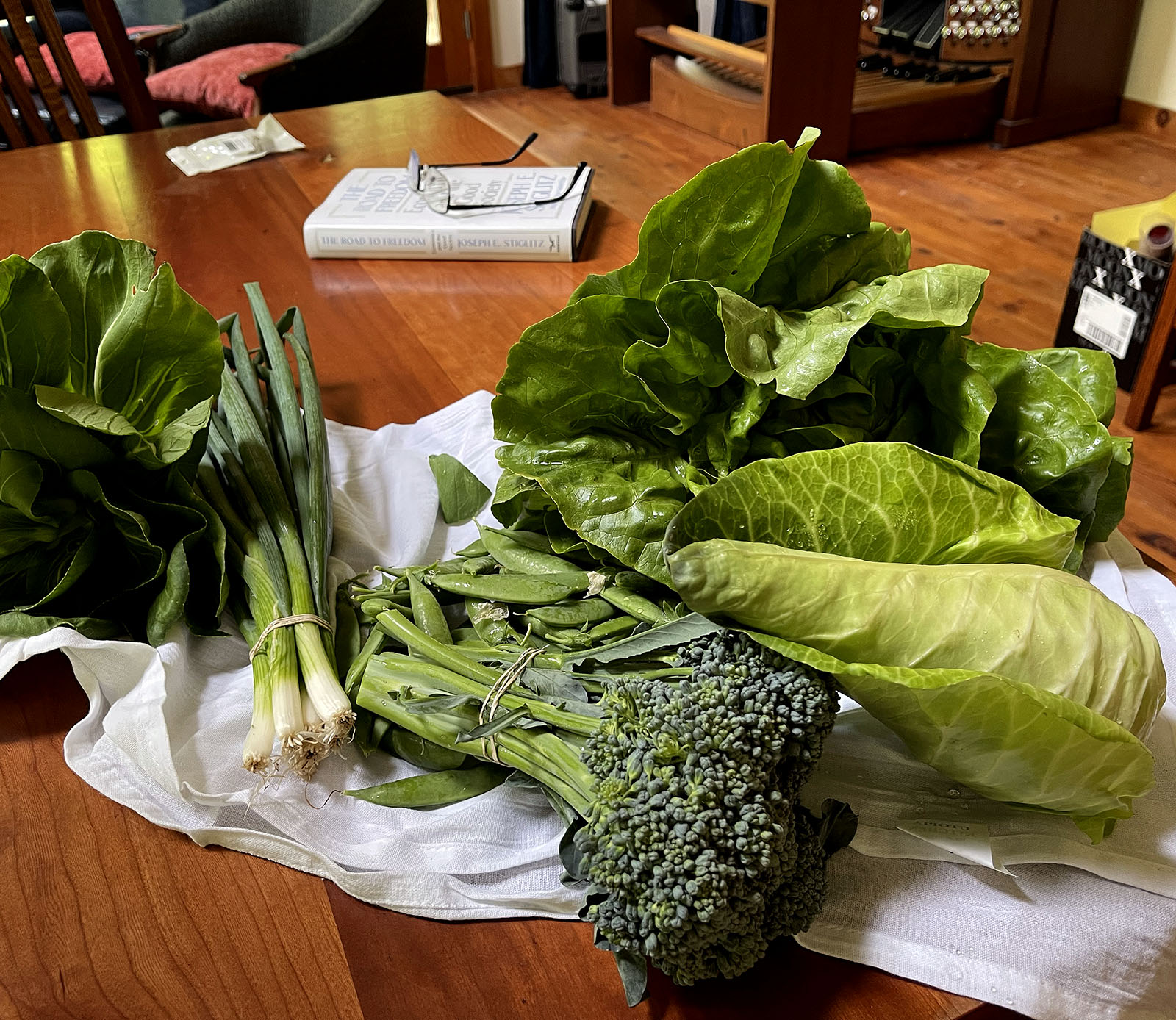
Source: Wikimedia Commons
For those of us who aim to be both well-informed and conscientious in our politics, it’s important to know that most sources of political news are corrupted by money and self-interest. For example…
When I read a few days ago that Nikki Haley has said that she will vote for Trump, my first reaction was, “Aha. As I suspected and expected, she’s now setting herself up to get the nomination when Trump either drops out or the Republicans dump him.” To me it seemed obvious all along that Haley’s intention was to set herself up as the only alternative to Trump. She succeeded, and she continued to get about 20 percent of the primary vote even after she said that she was no longer running.
But of course, that’s not what the political media reported. What the political media reported was that Haley had thrown in the towel, humiliated by getting a mere 20 percent support, making Trump indomitable and Trump 2024 inevitable. Trump-is-inevitable is one of the most profitable political memes of all time. It gets ratings and clicks on both sides of the political spectrum. It allowed the Washington Post and the New York Times to survive the steep decline of the newspaper industry. On the right, the Trump-is-inevitable meme flatters the idea of right-wing righteousness and right-wing power. On the left, the terror of it bolsters doom-scrolling. I’m not even going to mention cable news here because I don’t watch cable news and because I assume that neither does anyone else who aims to be both well-informed and conscientious in their politics.
We can trust the New York Times and the Washington Post (and even cable news!) on a great many subjects — culture, sports, entertainment, food, weather, and even, for the most part, international events. There is only one area in which the mainstream media absolutely cannot be trusted. That’s politics, because politics is so closely connected with media profits, with the job security of the mediocre herd of people who work in the political media, and with the attention that the political punditry can draw, preferably from “both sides.” This is why the media will make a very big deal out of a poll that shows Trump leading the horse race but bury a poll that shows the opposite. The formula is ridiculously simple and transparent: Flatter Republicans, scare the hell out of liberals.
Not until today did I read anything supporting my view that Nikki Haley is cleverly unfolding her strategy for positioning herself as the only alternative to Trump when Trump implodes. It’s no surprise that this came from the daily newsletter of Heather Cox Richardson. Richardson is a liberal historian. Though no doubt she is monitored by some elements on the right who want to know what the liberal intelligentsia are thinking, Richardson does not need right-wing clicks or ratings, either to boost profits or to support a sham of objectivity and impartiality. Richardson wrote, in this morning’s newsletter:
“There are two ways to look at Haley’s capitulation. It might show that Trump is so strong that he has captured the entire party and is sweeping it before him. In contrast, it might show that Trump is weak, and Haley made this concession to his voters either in hopes of stepping into his place or in a desperate move to cobble the party, whose leaders are keenly aware they are an unpopular minority in the country, together.
“The Republican Party is in the midst of a civil war. The last of the establishment Republican leaders who controlled the party before 2016 are trying to wrest control of it back from Trump’s MAGA Republicans, who have taken control of the key official positions. At the same time, Trump’s MAGA voters, while a key part of the Republican base, have pushed the party so far right they have left the majority of Americans—including Republicans—far behind.”
If anyone has seen, either in a mainstream media news item or an opinion piece, the ideas that Heather Cox Richardson relates so concisely above, then I will stand corrected. But I haven’t seen it in anything I’ve read. My view is that this is one of the things that the mainstream political media cannot say, because it would weaken the Trump-is-inevitable meme that profits depend on.
Now we get into a gray zone in which everything is murky because of probabilities, the likelihood of unforeseen developments, and even the actions of the state and federal courts, some of which have been corrupted by Republicans, including Trump, who appointed three members of the current Supreme Court.
So…
I still am strongly of the view that Trump will not be on the ballot in November. How can he be, because he is a criminal, because he is one of the most hated people in the world, because his faculties are failing so fast that he can’t follow a teleprompter, because his memory is shot, and because he is so out of it that he can’t stay awake in court and farts loudly at the defense table. We still don’t have the smoking gun (it will have to be caught on video) that will force the mainstream media to report that Trump is increasingly senile. Only a smoking gun on video will do, because Trump’s increasing senility does not support the Trump-is-inevitable meme. The political media will do everything they can to avoid having to write about Trump’s mental state.
On the other hand, writing about Biden’s age does support the Trump-is-inevitable meme. I’m not going to try to predict what the verdict will be New York, because there is always the chance of a jury fluke in such a politically charged case. But, if there is any justice, the jury will convict Trump on 34 felony counts, because it was entirely obvious, even before we heard the evidence in court, that Trump is guilty as sin.
Here is a kind of scientific real-world test of my view that Trump is doomed. On May 15, it was reported that Biden and Trump have agreed on two debates, the first of which is to be on CNN on June 27. In my view, Trump’s handlers know that Trump is by no means fit to appear in a live debate with Biden. According to my view, it was extremely clever of the Biden campaign to get Trump to agree to such a debate. The Biden campaign knows that Trump’s mind is shot. Scheduling a debate can only be a win for Biden. By far the most likely outcome is that Trump will come up with some lie to explain why he is backing out. If such a debate did happen, then Trump would get slaughtered on live television. If the June 27 debate actually happens, then I’m wrong and will have to do some rethinking.
If Republicans were smart — they aren’t — they would find a way to get Trump to withdraw before the Republican National Convention (July 15-18 in Milwaukee). If establishment Republicans fail to accomplish that, and if Trump drops out (or is somehow forced out) after the convention but before voting begins in November, then Republicans will be stuck with elevating their vice presidential choice to be the candidate for president. You can be pretty confident that Nikki Haley and establishment Republicans are secretly working to get Haley chosen as Trump’s running mate, instead of the bat-shit crazy Republicans who are at present jostling for the job (such as Kristi Noem, who boasted of killing a dog, confirming that the cruelty is the point). Getting Trump and the crazies out of the way by July 18 is Republicans’ best hope.
To believe the mainstream media is to believe that Donald Trump, who has never won a majority of the popular vote and who lost, big, in 2020, has somehow been made even more powerful and popular in spite of everything that has happened in the last four years. This could be true only if voting Americans are even more deceived now than ever. It’s certainly true that the mainstream media are working alongside the right-wing media to maximize deceit. Deceit has been as profitable for the mainstream media as it has been for the right-wing media. On the right, it’s about billions of dollars in profits. For the mainstream, sadly, it’s about survival.
It seems the mainstream media don’t think far enough ahead to consider what would happen to their profits if MAGA ever got back into power and had four more years to create in America a Russian-style kleptocratic economy, a Russian-style police and military, a Russian-style judiciary and justice department, and a Russian-style media.
Update 1:
A new viral podcast, “Shrinking Trump,” has become a must-listen. The mainstream media have, of course, ignored it, viral or not. Two prominent clinical psychologists talk about Trump’s mental condition.
Update 2:
The Washington Post knew in January 2021 about the Alitos’ upside-down American flag. They sat on the story, claiming that they believed the explanation that Alito’s wife gave. Note that the New York Times first reported this on May 16, while the Washington Post is just now admitting, on May 25, that it caught the story and killed it. Why did it take the Post so long to admit this? Also, you can be sure that the Washington press corps — a herd — all know each other and drink together. If Post reporters knew about the flag in January 2021, then it’s a good bet that Times reporters found out about it too. It’s juicy talk at Washington watering holes, but it’s not something that we mouth-breathing common folk need to know.
The rottenness of the political media still continues to shock me, though it is something that I have understood for many years.
Update 3:
The Washington Post is starting to catch hell for suppressing the Alito flag story. The Post deserves all the contempt and ridicule that it’s going to get.
Forbes: Washington Post Had—But Passed—On Blockbuster Alito Flag Story In 2021.
DailyKos: Washington Post sat on Alito flag story for 3+ years
Update 4:
From Heather Cox Richardson’s newsletter this morning (May 29, 2024):
‘Last November, Matt Gertz of Media Matters reported that ABC News, CBS News, and NBC News provided 18 times more coverage of 2016 Democratic presidential nominee Hillary Clinton’s comment at a fundraising event that “you could put half of Trump’s supporters into what I call the basket of deplorables” who are “racist, sexist, homophobic, xenophobic, Islamophobic,” than they provided of Trump’s November 2023 promise to “root out the communist, Marxist, fascist and the radical left thugs that live like vermin within the confines of our country.”
‘CNN, the Fox News Channel, and MSNBC mentioned the “deplorables” comment nearly 9 times more than Trump’s “vermin” language. The ratio for the five highest-circulating U.S. newspapers was 29:1.’



















